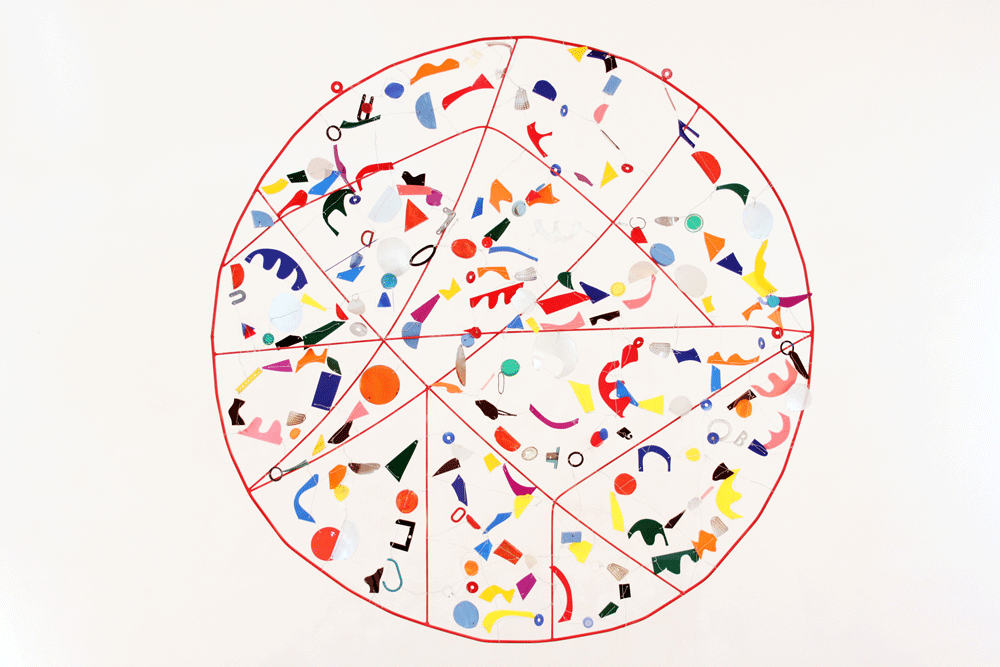Alexander Calder & Contemporary Art
Nasher Sculpture Center
Nasher Sculpture Center

Universally adored by children and art novices as an American wunderkind of surrealism, a Joseph Cornell of wire and iron, famed ‘mobilist’ Alexander Calder suffered a critical ebb in popularity following the increasingly intellectualized art-world of the 1970s. A raging optimist in an era of pessimism and an autodidact in an atmosphere of post-libidinal, post-colonial and post-Utopian discourse, Calder’s joyful, mutant objects expressed a direct sensuality which was anathema to the age. With this recent history in mind, the primary purpose of ‘Alexander Calder and Contemporary Art: Form, Balance, Joy’, an exhibition at the Nasher Sculpture Center, was to re-examine the misunderstood and often maligned artist and his influence on contemporary sculpture. Gathering an impressive cross-section of Calder’s mid-century mobiles and stabiles, along with the works of seven post-1990s sculptors whose creations owe an obvious debt to him, the show was a bijou, yet genuinely pleasurable experience.
Surveying the impressive collection of Calder’s biomorphic machines, I was immediately reminded of an obvious, yet surprisingly under-appreciated, leitmotif of his work – aeriality. As George Baker explains in the perspicacious essay, ‘Calder’s Mobility’, the artist’s method lies in ‘obliterat[ing] the base or the ground in which sculpture has normally stood [...] the desperate need to disconnect from the ground in order to void the obdurate connection of sculpture to its analogue, the rooted human body’. Not simply an artist who erected sculpture in the air, Calder’s work defied the medium’s terrestrial imperative. Both biomorphic and futurist in style, his indeterminate whirligigs Orange Paddle under the Table (1949) and The Spider (1940) appear to defy gravity by balancing on an illusory fulcrum, and, with their sinuous shapes and implied vitality, endeavour to reach toward some kind of alternative, fantasist space. A coffee can and wire assemblage, Bird (1952), reifies this yearning for flight with the odd juxtaposition of detritus and ephemera. Even Little Face (1943), composed of broken glass and copper wire, elevates the lineaments of the skull to hovering, polychromatic trinkets.
Sequestered largely in the basement level, Calder’s contemporary acolytes succeeded most when mimicking the master’s Icarian impulses. West Coast artist Kristi Lippire turns Calder’s obsession with sculptural animalia into Hanging Garden (2006), a steel and brass chandelier from which pullulates artificial flora growing free of the soil, as well as Fumigated Sculpture (2006), a mysterious tumescence cloaked in a kind of circus tent and practically bursting from its pressurized – and possibly poisonous – innards. Such palpable use of the pneumatic in sculpture encapsulates Sartre’s observation that, in Calder, ‘[m]obiles have to draw their mobility from some source [...] They feed on air, they breathe, they borrow life from the vague life of the atmosphere.’
Nathan Carter’s contributions were, by comparison, more diagrammatic than volumetric, but extend the science-fictive tinkering that festoons Calder’s bestial machines. TRAVELING LANGUAGE MACHINE WITH #3 FREQUENCY DISRUPTOR AND DISINFORMATION NUMBERS STATION (2007) is a cobalt blue tableau of aerials, dynamos and something that appears to be a dirigible alighting on a crowd of aliens. A true highlight of the exhibition, Carter’s sculpture has an immersive component that absorbs the viewer in the cryptograms of some hyper-analogue past. RADAR REFLECTOR ORIGIN PETIT CALIVIGNY GRENADA (2009) is a kinetic and colourful mandala that instantly evokes Calder’s circus fantasies and interest in spheres.
Finally, Jason Meadows’ Burlesque Fragments (2006) magnifies the diminutive Bird (1952) by assembling a bricolage of cardboard, steel and plastic rings into a hybrid creature – something akin to an ostrich and dinosaur – whose position on an elevated platform suggests the urge for flight but a material incapacity. While none of the contemporary artists in ‘Form, Balance, Joy’ can presume to match Calder in the sheer guilelessness of his vision, the wonder held for his unique aerial sculpture promises fresh perspective in a discipline often stilted by the gravity of form.
























